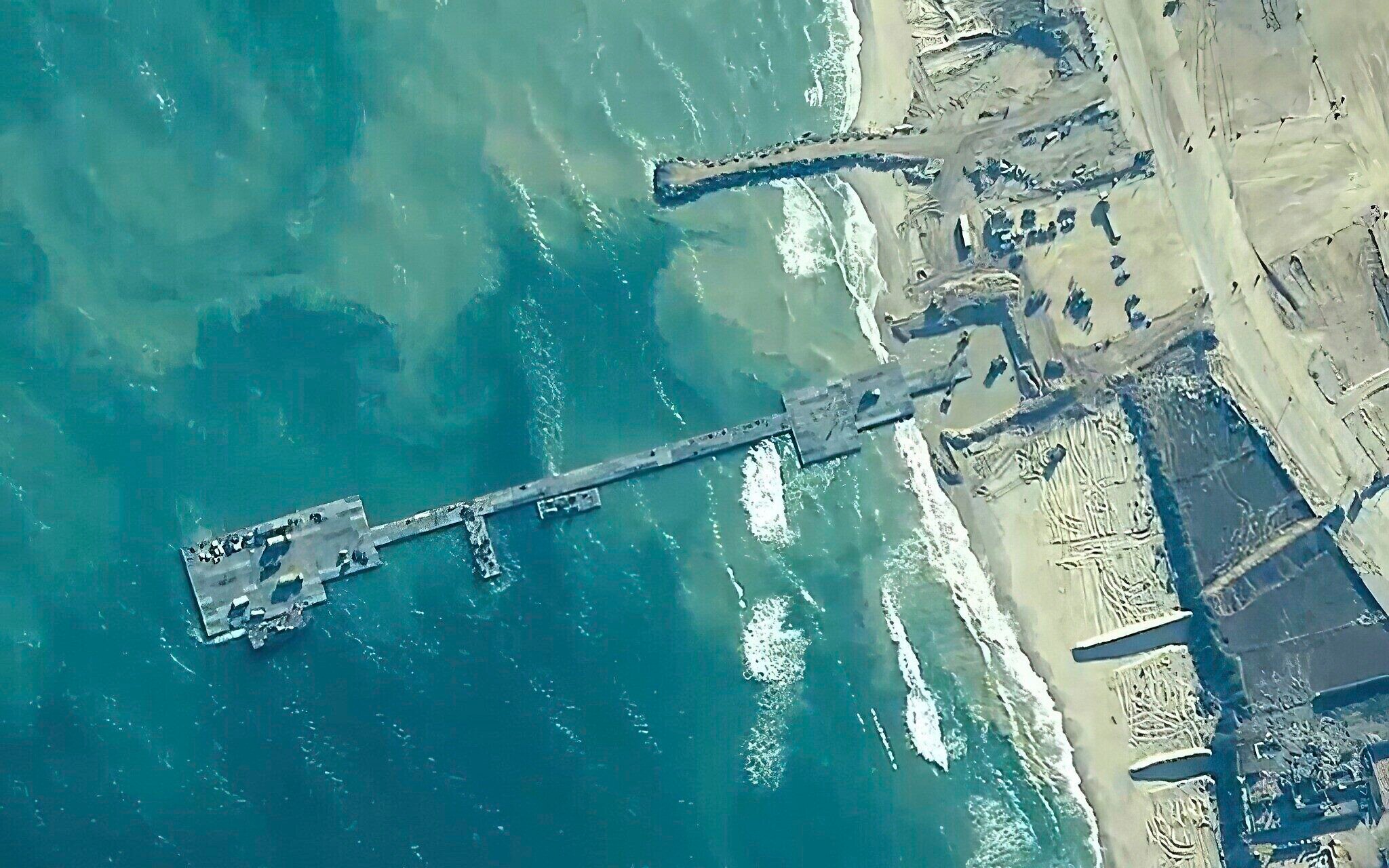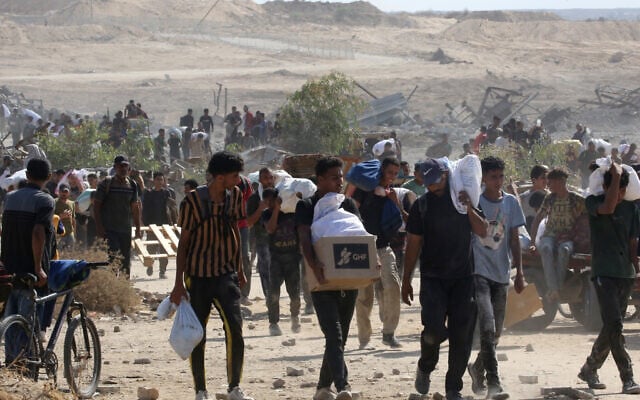


Two former senior Biden administration officials have revealed that it was Prime Minister Benjamin Netanyahu who asked US President Joe Biden last year to set up a temporary pier off the coast of Gaza to help deliver more aid.
Writing in a joint op-ed in Foreign Affairs magazine, Jack Lew, who served as US ambassador to Israel, and David Satterfield, who served as US envoy for Mideast humanitarian issues, said that in February 2024, Netanyahu was the one who asked Biden to have the US military build the floating pier.
The project had been seen to date as a wholly US endeavor.
While the former Biden officials credit the pier with having fed some 450,000 Gazans, it was widely seen as a highly costly failure after it broke apart several times and was forced to shut down completely after less than a month.
Still, Lew and Satterfield noted that Israel had agreed to open the Ashdod Port to aid flow in exchange for the pier — a concession that remained in place well after the floating dock stopped operating.
The pair also pointed out that Israel provided “significant construction assistance” as well as perimeter security for the pier and halted some IDF activity in the area in order to allow for it to function.
The top Biden officials also recalled how then-defense minister Yoav Gallant proved to be a critical conduit that the US relied on to expand the access of humanitarian aid into Gaza, overcoming opposition from Netanyahu’s far-right coalition partners.
Gallant helped convince the rest of the government to allow aid to come into Gaza directly from Israel through the Kerem Shalom Crossing in early 2024, after the US vetoed a UN Security Council resolution demanding an immediate ceasefire in Gaza.
Lew and Satterfield argued that the Biden administration’s close monitoring of the humanitarian situation at the highest levels helped stave off the mass starvation that aid groups now warn is taking shape in Gaza.
“Even Biden tracked the number of trucks daily,” the former US officials recalled. But with the election of US President Donald Trump in November 2024 and his entry into office in January, “there was a new administration in Washington that was far less involved in the details of aid delivery—and had begun dismantling the architecture of US assistance worldwide.”
This year, Israel resumed humanitarian aid deliveries to Gaza on May 19, after a pause since March 2, and last month also allowed the resumption of airdrops of food into the Strip amid growing global pressure and mounting fears of widespread starvation. Aid groups still insist that the aid entering the Strip is not enough to feed the two million people living there, and call for lifting all restrictions on trucks entering Gaza via land.
Israel insists that it has set no limit on the amount of aid that can enter Gaza, and accuses the UN and humanitarian aid groups of not distributing the food and supplies that have already entered the Strip.
The two former Biden officials wrote that “neither the IDF nor the UN ever shared evidence with us — or asserted to us privately — that Hamas was physically diverting US-funded goods provided by the World Food Program or international nongovernmental organizations.”
In addition, they said, “there was no evidence of substantial Hamas diversion of any major assistance funded by the UN or nongovernmental organizations (NGOs).”
Israel has insisted that the opposite is true and, asserting widespread, systemic Hamas theft of aid, created the controversial US-backed Gaza Humanitarian Foundation (GHF) in May.
Israel has provided anecdotal evidence of footage showing gunmen who it claims are Hamas operatives commandeering aid trucks, but The New York Times cited two senior military officials last month who acknowledged that while Hamas is stealing some of the aid, there is no evidence to suggest that it is a systemic problem.
Lew and Satterfield clarified that “Hamas did find ways to tax, extort, and to some extent divert aid, including assistance from Egypt handled by the Palestine Red Crescent Society,” echoing a point that Satterfield made in an interview with The Times of Israel last month.
But they asserted that “theft and diversion of UN assistance was primarily the work of criminal gangs” operating in Gaza.
For the first months of the war, Israel allowed Hamas police to secure convoys to prevent criminals from looting the trucks. But Israel eventually reached the conclusion that Hamas was using this role to hold onto its governance of Gaza and began targeting the terror group’s operatives in January 2024, leading to the rise of criminal gangs and looters, Lew and Satterfield asserted.
Israel initially preferred to rely on private contractors to secure convoys, but subsequently realized that these groups were also working with Hamas and the criminal gangs, leading to the termination of this arrangement.
Lew and Satterfield wrote that the GHF was initially designed as a program that would “operate in a postwar Gaza in which international forces would maintain security,” but instead “started under very different wartime conditions.”
They noted that many people in Gaza seeking aid “have been killed or injured both by stampedes and by live fire from some combination of the IDF, Hamas, and criminal gangs” since the GHF began its operations.
However, while the United Nations has called for the GHF to be fully shut down, Lew and Satterfield suggested that the bodies should be working together to best provide assistance to Gazans.
“The UN needs to accept security from the IDF, the GHF, or its own contractors,” they wrote. “Rather than trying to sideline the GHF, the UN should work with it or at a minimum parallel to it. And the GHF needs to be open to learning from the UN, with its deep knowledge of operating in Gaza and of how professionals structure humanitarian assistance.”
Times of Israel staff contributed to this report.





